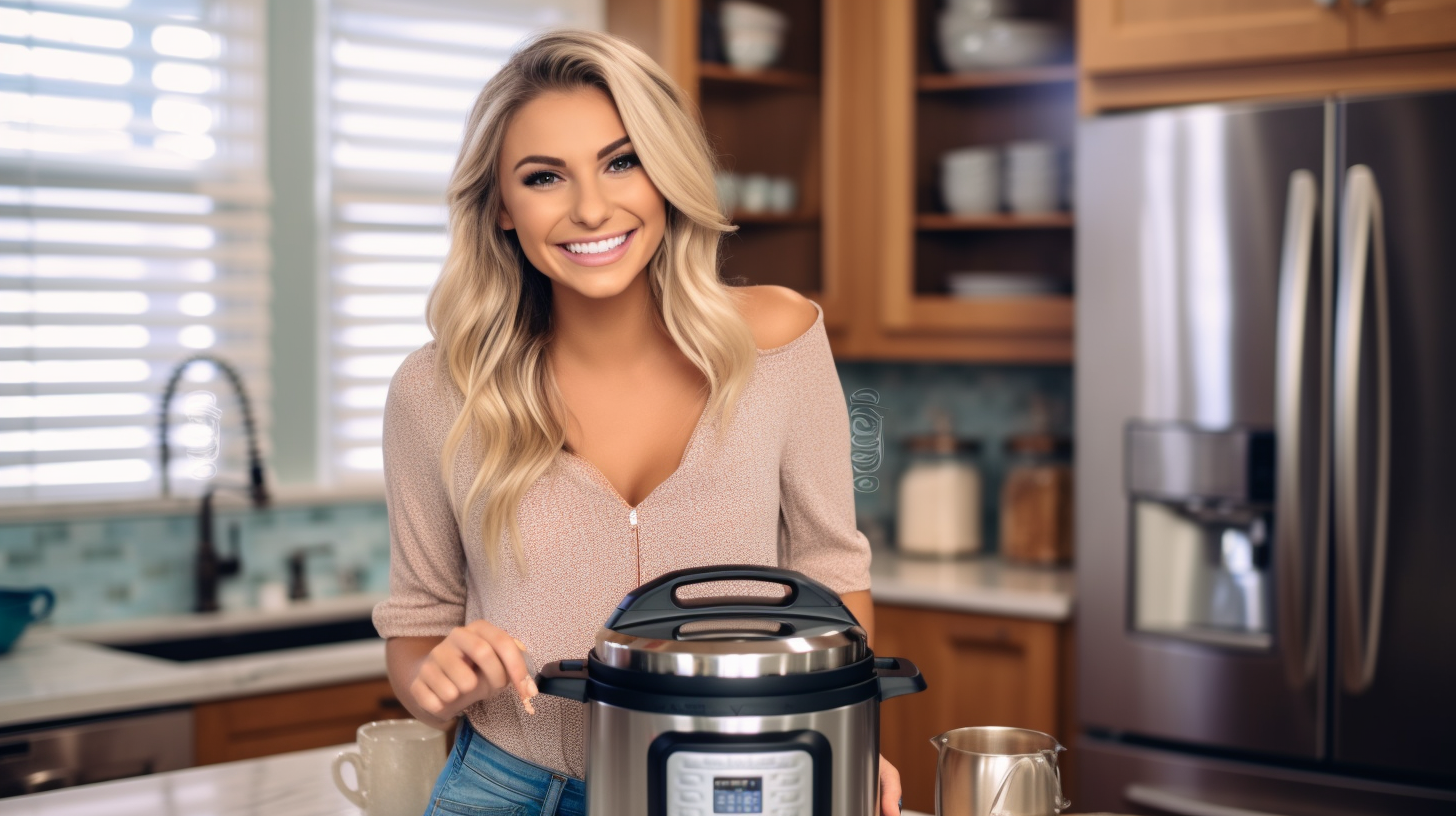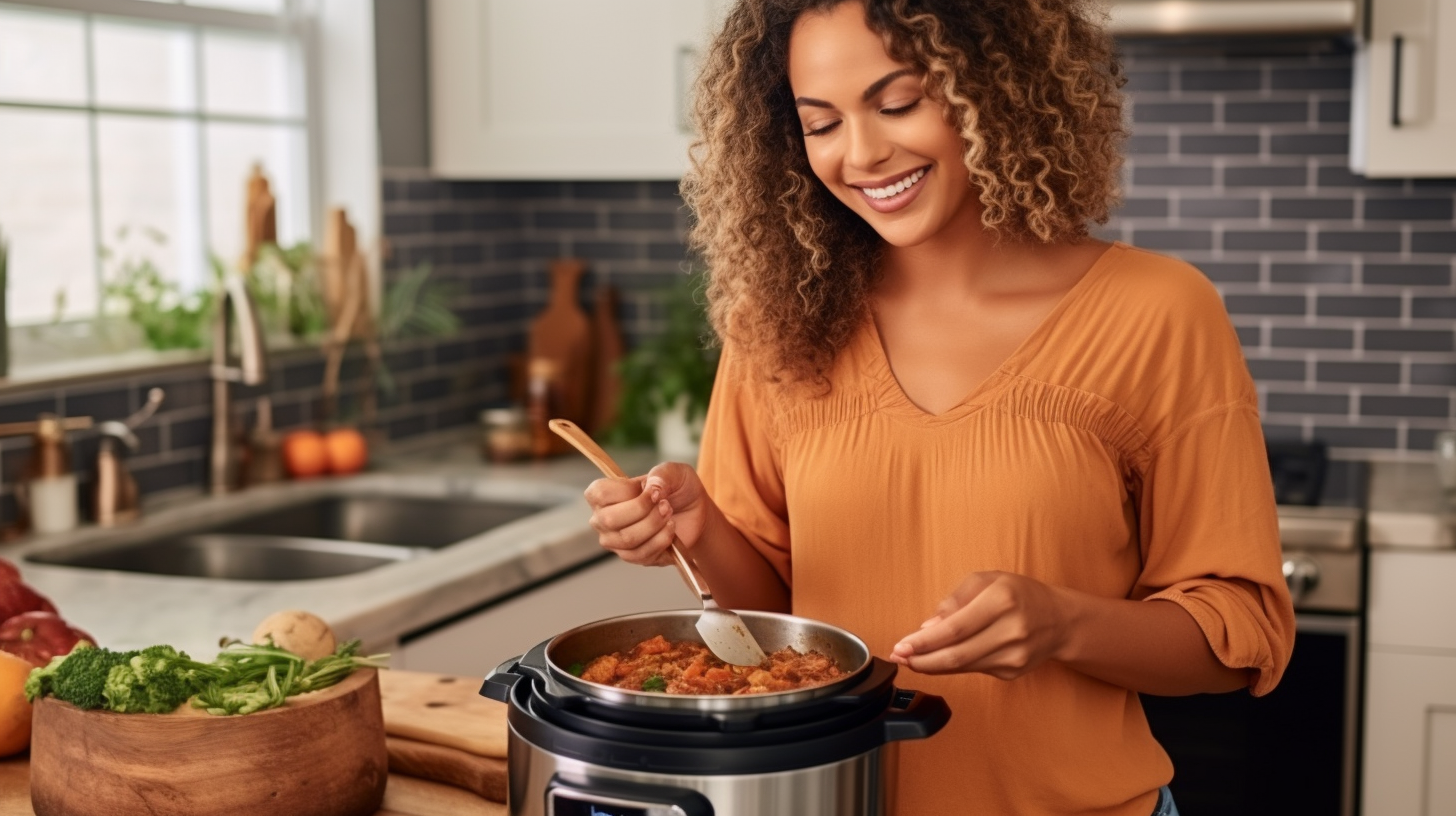Canning with an Electric Pressure Cooker Preserve Your Food
 Electric pressure cooker canning
Electric pressure cooker canning(last modified :2023-06-14T00:00:00.000Z)
- Goto Kitchen Collection ›
- Goto Pressure Cookers ›
- Kitchen Blogs
Master the Art of Canning with an Electric Pressure Cooker: A Comprehensive Guide
I. Canning with an Electric Pressure Cooker:
This section will provide an overview of the blog content, highlight the importance of canning for food preservation, and outline the benefits of using an electric pressure cooker for canning.
A. Overview of the Blog Content
This blog post will guide you through the entire process of canning with an electric pressure cooker. You'll learn about the equipment you need, safety guidelines, a step-by-step canning process, and some additional tips and tricks to make your canning journey easier.
B. Importance of Canning for Food Preservation
Canning is a method used for preserving food that allows you to enjoy seasonal produce all year round. It involves heating food in a closed glass jar to stop the natural spoilage that would otherwise occur, and removes air from the jar to create a seal.
C. Benefits of Using an Electric Pressure Cooker for Canning
Electric pressure cookers provide numerous benefits for canning. They allow for accurate control of pressure and temperature, which is essential for successful and safe canning. Moreover, they can be much faster and more energy-efficient than traditional canning methods.
II. Understanding Electric Pressure Cookers:
Before you start canning with an electric pressure cooker, it's essential to understand how these devices work, learn about various models and brands, and appreciate the advantages they offer for canning.
A. Introduction to Electric Pressure Cookers
An electric pressure cooker is a versatile kitchen appliance that can be used for various cooking methods, including sautéing, slow cooking, and of course, pressure cooking. It operates by trapping steam inside to build up high pressure and temperature, which allows the food to cook faster.
B. Various Models and Brands
There are many different models and brands of electric pressure cookers available on the market today. Some popular brands include Instant Pot, Cuisinart, and Ninja. Each brand and model offers different features, sizes, and price points, so you can choose the one that best suits your canning and cooking needs.
C. Advantages of Using an Electric Pressure Cooker for Canning
Electric pressure cookers are an excellent tool for canning. They are designed to reach the high temperatures required for canning, ensuring your food is safe for long-term storage. They also come with preset functions for various foods, which makes the canning process more straightforward and less error-prone.

III. Safety Guidelines for Canning with an Electric Pressure Cooker
Safety is paramount when it comes to canning. This section will go through the general safety guidelines for canning, specific safety considerations when using electric pressure cookers, and how to avoid botulism and other foodborne illnesses in canned goods.
A. General Safety Guidelines for Canning
To ensure your canned goods are safe, it's crucial to follow these general safety guidelines:
- Always use fresh and high-quality ingredients.
- Follow the recipe exactly, especially the processing times and pressures.
- Clean and sterilize your jars and lids properly before use.
B. Safety Considerations When Using Electric Pressure Cookers
When using electric pressure cookers, keep in mind the following safety considerations:
- Ensure the pressure cooker is in good condition, with no damaged seals or locks.
- Do not overfill the cooker.
- Release pressure carefully according to the manufacturer's instructions.
C. How to Avoid Botulism and Other Foodborne Illnesses in Canned Goods
Botulism is a serious illness caused by a toxin produced by the bacteria Clostridium botulinum. It can be prevented in canned goods by:
- Processing food at the correct pressure and for the correct amount of time.
- Acidifying low-acid foods like vegetables and meats with vinegar or lemon juice.
IV. Preparing for the Canning Process
Proper preparation is key to successful canning. This includes selecting and preparing foods for canning, gathering essential canning tools, and preparing your jars, lids, and rings.
A. Selecting and Preparing Foods for Canning
Choose fresh, high-quality produce for canning. Wash and cut your produce into suitable sizes and remove any stems, seeds, or pits if necessary.
B. Gathering Essential Canning Tools
You will need the following tools for canning: an electric pressure cooker, glass canning jars, lids and rings, a jar lifter, a canning funnel, and a headspace tool.
C. Preparing Your Jars, Lids, and Rings
Clean your jars, lids, and rings thoroughly before use. Sterilize them by boiling in water or using a dishwasher's sterilize cycle. Keep them warm until they are ready to be filled.

V. Step-by-Step Guide to Canning with an Electric Pressure Cooker
Canning with an electric pressure cooker involves several steps. Here's a basic guide to get you started.
A. Filling the Jars with Your Chosen Food
Start by packing your cleaned, cut, and prepared food into sterilized jars. Leave enough headspace at the top as per your recipe's instructions.
B. Placing Jars into the Electric Pressure Cooker
Arrange the filled jars onto the rack in the pressure cooker, ensuring they do not touch each other or the sides of the cooker.
C. Setting the Right Pressure and Time for Your Specific Food Item
The required pressure and processing time will depend on the specific type of food you are canning. Refer to a trusted canning guide or your recipe for these details.
D. Letting the Pressure Come Down Naturally After Cooking
Once the processing time is up, turn off the cooker and allow it to depressurize naturally. This is an important part of the canning process, so don't rush it.
E. Removing and Cooling the Jars
Once the pressure is fully released, carefully remove the jars using a jar lifter and place them on a towel to cool. Do not touch or move the jars for at least 12-24 hours.
VI. Troubleshooting Common Issues in Pressure Cooker Canning
Like any process, canning with a pressure cooker can encounter some hitches. Here are some common problems and solutions, how to recognize signs of spoilage, and what to do if your electric pressure cooker malfunctions.
A. Identifying Common Problems and Their Solutions
Some common issues include jars not sealing, food discoloration, or loss of liquid. These could be due to problems like overfilling jars, under-processing, or drastic changes in pressure.
B. Recognizing Signs of Spoilage in Canned Goods
Signs of spoilage include off-smelling food, mold, cloudy liquid, or lids that are bulging or unsealed.
C. Managing Electric Pressure Cooker Malfunctions
If your pressure cooker malfunctions, refer to the user manual or contact the manufacturer's customer service for assistance. It's essential to keep the appliance in good working condition for safe and effective canning.

VII. Preserving Different Types of Foods
An electric pressure cooker allows for different canning methods suitable for various types of food. Here we discuss pressure canning for low-acid foods and water bath canning for high-acid foods, along with some recipe suggestions.
A. Pressure Canning Low-Acid Foods (like Meats, Poultry, Vegetables)
Low-acid foods, including meats, poultry, and vegetables, must be processed using pressure canning to ensure they reach the temperatures necessary to kill off harmful bacteria. The exact process, pressure, and processing time will depend on the specific food and recipe.
B. Water Bath Canning High-Acid Foods (like Fruits, Pickles, Jellies) in an Electric Pressure Cooker
High-acid foods, such as fruits, pickles, and jellies, can be safely processed using a water bath canning method. Even in an electric pressure cooker, this method involves submerging the jars in boiling water for a certain period.
C. Recipe Suggestions for Both Methods
A selection of tested and proven recipes will follow, showing you how to make the most out of your electric pressure cooker in preserving both low-acid and high-acid foods.
VIII. Tips for Long-Term Storage of Canned Goods
Once your food is canned, it's important to store it properly to maintain its quality and safety. Here are some tips on the ideal storage conditions, the shelf-life of canned products, and how to check your canned goods before consumption.
A. Ideal Storage Conditions for Canned Goods
The best place to store your canned goods is in a cool, dark, and dry place. Avoid places with high heat or extreme temperature fluctuations, like near a stove or in a garage.
B. Shelf-Life of Canned Products
Generally, home-canned goods can last up to a year when stored properly. However, the quality and taste may start to deteriorate after that point.
C. How to Check Canned Goods for Freshness and Safety Before Consumption
Before consuming your canned goods, check for signs of spoilage such as bulging lids, leaking or spurting liquid when opened, off smells, or any visible mold. If in doubt, throw it out.


Goto Pressure Cookers
Air Fryers vs Pressure Cookers Find Your Perfect Kitchen Appliance
Discover our comprehensive pressure cooker cooking times chart for popular foods...
Click to read more about Air Fryers vs Pressure Cookers Find Your Perfect Kitchen AppliancePressure Cooker Cooking Chart
Discover our comprehensive pressure cooker cooking times chart for popular foods...
Click to read more about Pressure Cooker Cooking Chart
Top 10 Popular Foods for Canning
Discover the joy of home canning with our guide on the top 10 foods to can. Lear...
Click to read more about Top 10 Popular Foods for Canning
Pressure Cooker Chicken Thighs Quick Easy Flavorful
Learn how to prepare savory, tender chicken thighs in a pressure cooker. A quick...
Click to read more about Pressure Cooker Chicken Thighs Quick Easy Flavorful
Pressure Cooker vs Slow Cooker Quick vs Easy
Explore the world of slow cookers and pressure cookers in our comprehensive guid...
Click to read more about Pressure Cooker vs Slow Cooker Quick vs Easy
Exploring the Ninja Foodi 14-in-1 8-qt SMART XL Pressure Cooker
Discover the versatility and performance of the Ninja® Foodi® 14-in-1 8-qt. SMAR...
Click to read more about Exploring the Ninja Foodi 14-in-1 8-qt SMART XL Pressure Cooker
Power Pressure Cooker XL An Old Favorite
Explore a balanced review of the Power Pressure Cooker XL. Learn about its featu...
Click to read more about Power Pressure Cooker XL An Old Favorite
Instant Pot Pressure Cooker Which One Is Right For You
Dive into our detailed guide on Instant Pot pressure cookers, featuring the Inst...
Click to read more about Instant Pot Pressure Cooker Which One Is Right For You
Insignia Stainless Steel Multi-Cooker and Old Favorite That was Discontinued
Explore our comprehensive blog about the Insignia Pressure Cooker, a once-popula...
Click to read more about Insignia Stainless Steel Multi-Cooker and Old Favorite That was Discontinued